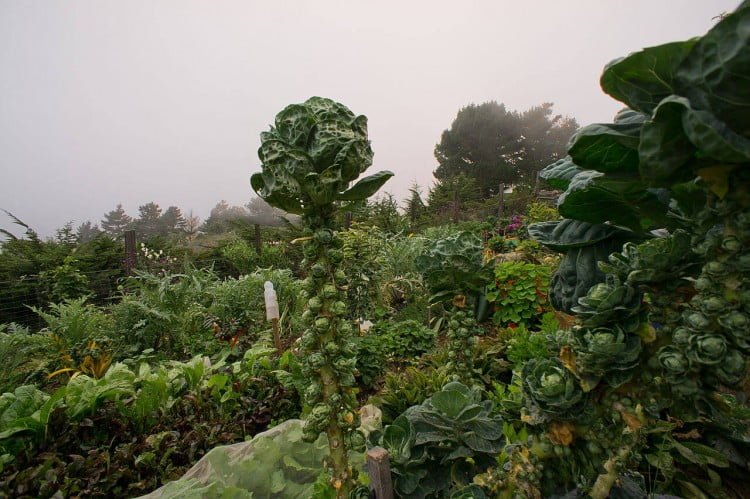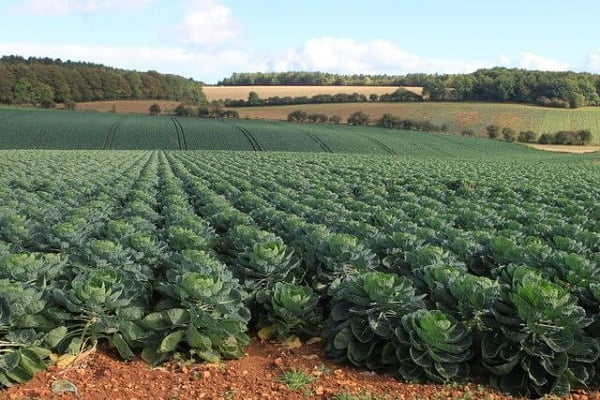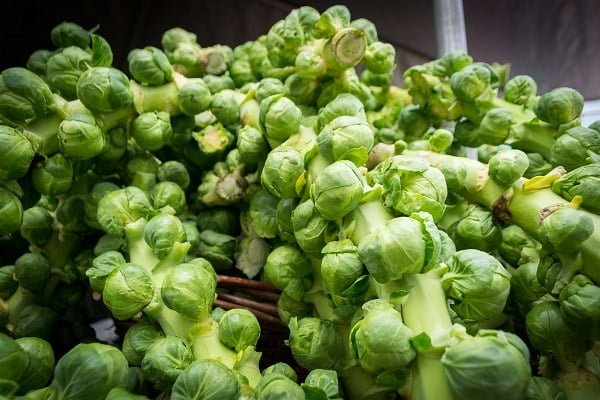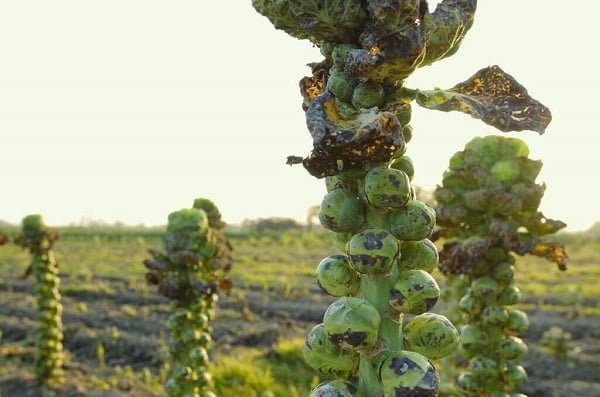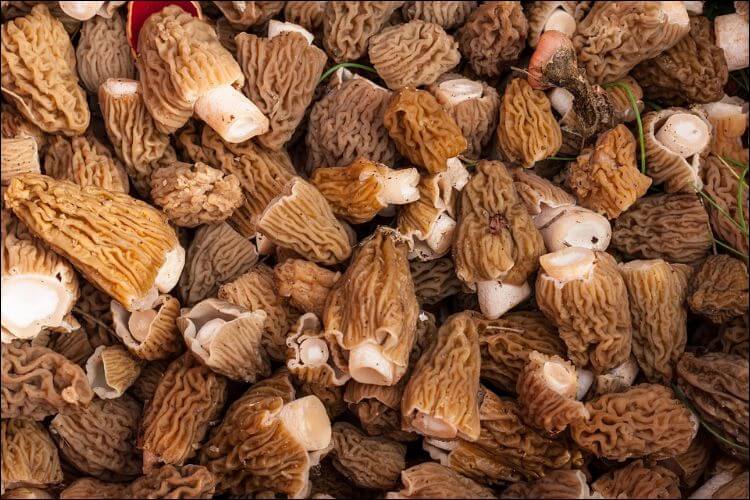If you are interested in how to grow Brussel sprouts on your property, you have come to the right place! We have a systematic guide for you to learn how to grow Brussel sprouts and enjoy endless tantalizing dishes!
[affiai asin=”B00CBXYM12,B01974D2YU,B06ZXWNQD9,B00LKPAJDM,B00U9M3BQ4″ template=”carousel”]
Brussel sprouts belong to the cabbage family and they are an excellent source of vitamins and proteins. They are rich in vitamin C and vitamin K, vitamin B6, dietary fiber, vitamin B1, potassium, phosphorus and omega-3 fatty acids. In other words, Brussel sprouts make the perfect addition to any diet and healthy lifestyle. If you are lucky enough to own a patch of land, turning it into a vegetable garden is a wonderful idea. After all, who does not love fresh vegetables, scented herbs, and spices to add freshness and healthy deliciousness to every meal?
How to Grow Brussel Sprouts: A Few Words on Weather and Soil
Before you rush down to your favorite nursery to get some Brussel sprout seeds, we need to make a few considerations on the best climate and soil types that favor the plentiful growth of Brussel sprouts.
- Weather
Brussel sprouts love cool weather, as the small heads mature best in light frosty and cool areas. This is the reason why you should plant the Brussel sprouts in early spring or late summer for fall crops. Crops that mature in hot or dry weather will gain a bitter taste and a flimsy texture. However, do not forget that Brussel sprouts, just like any other vegetable, needs at least six hours of sun a day. In other words, make sure you pick a sunny place on your property to make sure your Brussel sprouts get the light and warmth they need.
- Soil
You need to test the soil first before planting Brussel sprouts. This is a recommendation universal to any vegetable you plan to introduce in your garden, as the soil chemical makeup can make or break your crops. Brussel sprouts fare well in fertile, well-drained, moist soils. You need to establish a soil pH of about 6.8 for optimal growth and for preventing root diseases. Brussel sprouts love a soil offering them organic nutrients. Depending on the soil test results, you can amend the soil with nitrogen-rich nutrients. Composted manure, organic compost, blood meal or cottonseed meal are some of the solutions you can use to organically fertilize the soil and give your Brussel sprouts the growth foundation they need.
Brussel Sprouts Varieties
Seasoned gardeners recommend two Brussel sprout varieties that come with a set of features and benefits:
- The Valiant variety yields consistent, uniform sprouts – recommended for gardeners and vegetable growers who want large productions.
- The Jade Cross variety is resistant to some diseases – recommended for beginner vegetable growers who want resilient types first to get the hang of it.
Brussel Sprouts Planting
The Brussel sprout seeds should start indoors at least 6-8 weeks before the last spring frost.
- If you bought Brussel sprouts seeds in a bag, make sure you plant them right away. Do not let them sit for too long and dry out in their package.
A few days before bringing out the Brussel sprouts seedlings from the house, fertilize the soil well.
- Specialists recommend you use raised beds for Brussel sprouts. Cold season vegetables do well in raised beds, especially if you plant them outside when the temperatures are not yet consistent and the seasons are about to change.
If you plant the Brussel sprouts in rows or beds, keep in mind they are large crops, so they need plenty of space to develop.
- Plant Brussel sprouts 24 inches apart in any direction in a vegetable bed.
- Plant Brussel sprouts 36 inches apart in a vegetable row.
After you planted the seedlings, water the plants thoroughly. If the plants do not receive enough rain yet, make sure you water them on a weekly basis, giving them at least 1 to 1 1/2 inches of water.
- If you want the best crop, make sure you also mulch the freshly planted Brussel sprouts. You need to keep the soil cool and the sprouts moist and nourished. For a boost of growth and health, you can also apply a starter fertilizer now.
Brussel Sprouts Long-Term Care
Now that you planted your Brussel sprouts, it is time to care for them properly. Some of the most important activities now are fertilization, watering, pest control, and physical protection of the roots.
- Fertilization
Three weeks after you transplanted the Brussel sprouts seedlings you need to fertilize the soil. Specialists recommend you continue to use organic fertilizers and homemade soil amendments. Many people do not know how tall Brussel sprouts grow and what are the secret ingredients they need to yield good crops.
When properly spaced, fertilized and watered, Brussel sprout plants grow to 2 1/2 feet tall when they reach full maturity. In other words, if you want plentiful crops, you need to keep them nourished. The best approach to fertilization is to apply a nitrogen-rich organic fertilizer when the plants are 12 inches tall and then every three to four weeks.
- Watering
Brussel sprouts can fare well without a strict fertilization program, but they will suffer tremendously if you do not give them enough water. Provide your Brussel sprouts with at least one inch of water per week. This is not negotiable (unless it rains and the weather compensates for the water).
You should also refresh the moist layer of organic mulch you applied after plantation regularly. You need to keep your sprouts cool and moist and protect them from unexpected extreme weather phenomena and pests.
- Pest Control
Brussel sprouts are vulnerable to pests that usually attack the cabbage family members. Aphids, harlequin bugs, cabbage loopers, diamondback moth, imported cabbageworm, cutworms, cabbage maggot, thrips, and webworms are some of the main enemies of Brussel sprouts. Aphids are especially hard to deter. Specialists recommend you use organic pest control methods to get rid of unwanted insects. Using chemicals can endanger the crops as the substances infiltrate deep into the soil and water resources and the plants’ roots, turning them inedible.
- Disease Control
Brussel sprouts are sometimes vulnerable to powdery mildew, white mold, rust, and clubroot disease, among others. If you want to treat the plants in an organic, safe manner, you should call for professional help.
Brussel Sprouts Harvest
You know you are ready to harvest when tiny cabbage heads are firm, green, and 1 to 2 inches in diameter. You can harvest the plants until the first hard freeze takes over the land. The harvesting technique is simple: twist the sprout gently, but firmly, until you remove it from the plant.
- Remove the yellowing leaves when you remove the lower sprouts because the plant will continue to grow upwards and produce more leaves and sprouts.
- If you cut off the top of the plant about 3 weeks before you want to harvest as you move into winter, you can trick the plants to mature all at once.
- One healthy, well-grown plant can yield 2 to 3 pounds of sprouts; this is why Brussel sprouts storing should be on your list of top priorities.
- If you still want to harvest deep into winter after the first round of harvesting, cover the soil with straw mulch or a groundcover/landscape fabric to keep the plants protected.
Brussel Sprouts Storage
Now that you have plenty of sprouts, you need to store them correctly. Naturally, you should eat them fresh, but if you obtained large crops, the refrigerator is your best friend.
- Do not wash Brussel sprouts when you store them.
- Put them in plastic bags while they are freshly harvested and unwashed.
- Do not keep the sprouts in the refrigerator for more than five days – you progressively lose all those delicious vitamins and minerals. While all cabbage family member are quite resilient to being in the refrigerator for months, it is not a good idea to keep them that long.
Brussel Sprouts FAQs
Before we leave you to cooking your freshly harvested Brussel sprouts, we want to answer a few frequently asked questions about these wonderful vegetables.
1. How else can You Store and Consume Brussel Sprouts besides Fresh or Frozen?
Brussel sprouts make some mean pickles we will tell you that! If you are into pickled cabbage or cauliflower, you will certainly love to pickle Brussel sprouts as well – they are a delight and the pickling process is not difficult at all. There are plenty of recipes on how to pickle Brussel sprouts for long-term storage and consumption, so get creative!
2. Can You Eat Brussel Sprout Leaves?
One of the interesting questions we are about to answer is if we can also eat the Brussel sprouts leaves. The answer is “Yes” – you just have to cook them as if you would cook collards. They are delicious and full of vitamins as well.
3. Why are not there any Canned Brussel Sprouts?
Canning means a lot of heat, which defeats the purpose of Brussel sprouts. Harvest them in November or December and you will get rich, fresh and sweet vegetables to accompany your dishes. Canning Brussel sprouts is not the best idea because you will basically turn the sprouts into a smelly, gray mush and this is not what you have in mind for Thanksgiving or Christmas dinner.
Do you like Brussel sprouts? Or do you have more questions on how to grow Brussel sprouts? Do you know other tips and tricks on how to get the biggest, most delicious, and sweet Brussel sprouts next season?
Image sources: 1, 2, 3, 4, 5, 6





